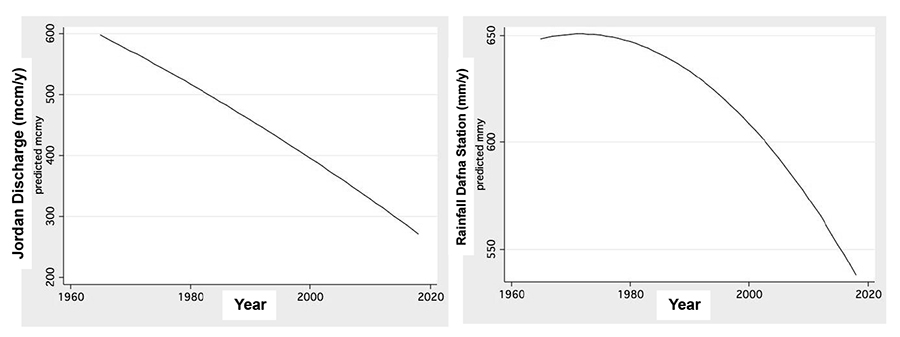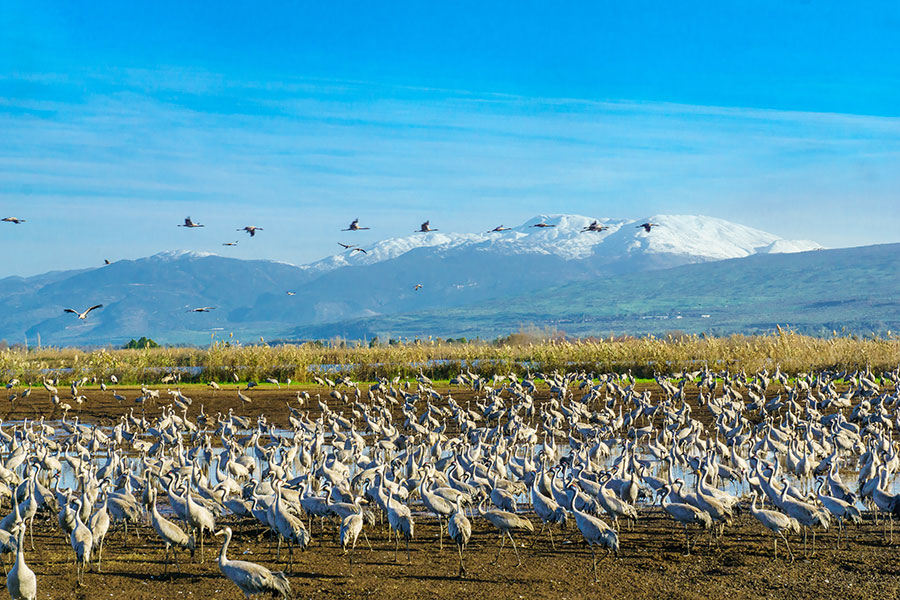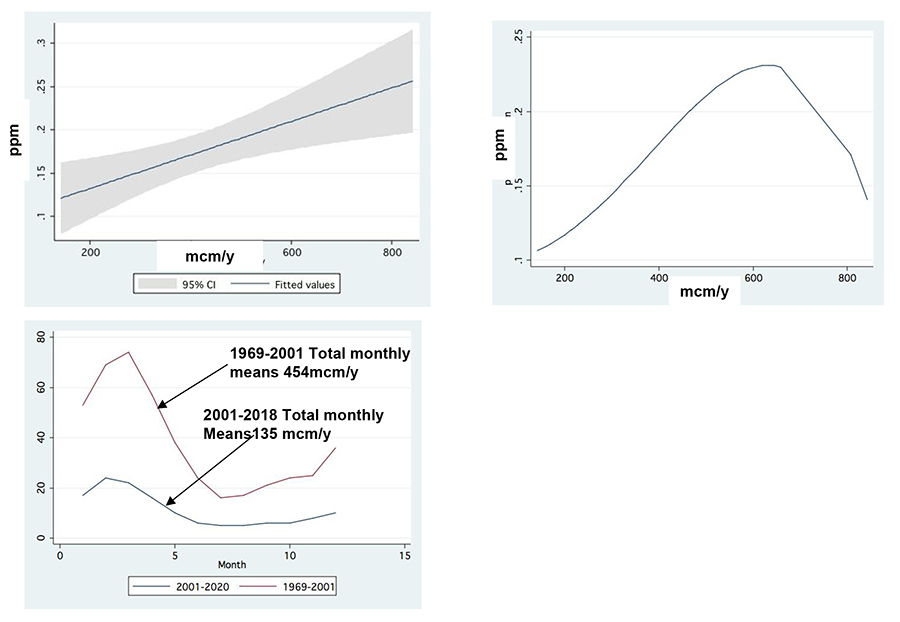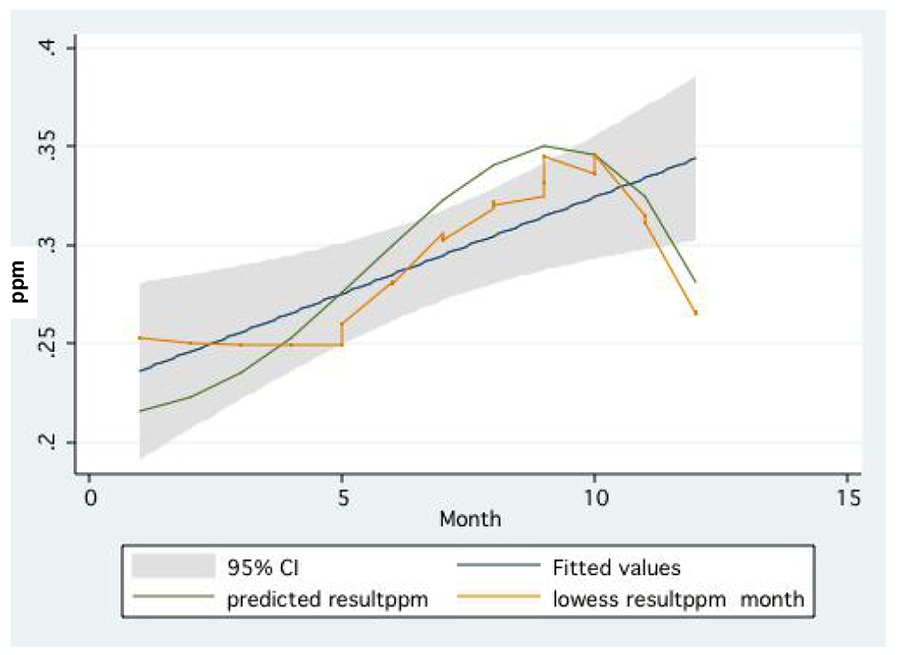Protecting Israel’s freshwater: Phosphorous outsourcing in Lake Kinneret
Freshwater is such a scarce commodity in Israel that taking the salt out of seawater is routinely used as a way of supplying the population with drinking water. Lake Kinneret is the only natural freshwater lake in the whole country. Dr Moshe Gophen and his collaborators at MIGAL Galilee Research Institute have assessed the importance of different potential sources of phosphorus of Lake Kinneret. The fear is that phosphorus levels could become too high, causing eutrophication (excess growth of algae and lowering of oxygen levels) in the lake. Dr Gophen’s work will help Israel decide on the best way to protect this crucial freshwater source in the long term.
People around the world have very different relationships with freshwater. The UK, for example, generally gets a lot of rain while Slovenia is known for its plentiful and diverse waterways, with about 300 sizeable lakes. In contrast, Israel only has one freshwater lake.
Lake Kinneret (also called the Sea of Galilee) is about 13km wide and 21km long and is found in the north of the country, in the Syrian-African rift valley. It supplies about a third of the freshwater needs of the country. To help make up the shortfall, energy-hungry desalination plants are used to take the salt out of seawater. You might think that nobody would risk damaging the water quality in this lake, but changes in land use in the water catchment pushed things nearly to a quality threat. All potential pollutants of the lake, including excessive nutrients, are of concern. Dr Moshe Gophen and his colleagues at the MIGAL Galilee Research Institute are interested in how nutrient levels were affected by the land-use choices of the past and are attempting to predict what is likely to happen in the future.
The Hula Valley: from swamp to agriculture to tourism hotspot
The Hula Valley is an important part of Lake Kinneret’s water catchment. Water falling here feeds into the River Jordan which subsequently flows south to Lake Kinneret. Lake Kinneret gets almost two-thirds of its water input and over half of its nutrient input from this route.
The Hula Valley has changed beyond recognition in the last eighty years. Pre-1940s, the valley was a swampy area with a shallow lake (1.5m mean depth) buzzing with malaria-carrying mosquitos. In the 1950s it was drained, like many wetlands around the world, and the land converted to intensive agriculture. Crops like cotton, corn, alfalfa, and vegetables were grown, providing a significant income to people living in this northern area of Israel. Intensive agriculture was profitable for a while but not designed to be sustainable. The water table dropped, soils were degraded, and crop yields fell. At its worst, the degradation was so bad that soil was literally subsiding at a rate of about 7–10cm each year.

Since the 1990s, the story has been looking more hopeful, and many measures have been put in place to improve the soil condition and manage the area more sustainably as part of the Hula Reclamation Project (HRP). A small shallow lake has been reinstated called the Agmon-Hula. To stop possibly polluted and nutrient-rich waters flowing through Agmon-Hula and onto Lake Kinneret, a large plastic sheet was strung across the Hula Valley from east to west. The nutrient-rich water that it trapped is pumped away to be reused as irrigation for crops away from the Kinneret catchment area.
Now, the Hula Valley is known for its abundant birdlife and fishing possibilities. The influx of migrating cranes (Grus grus) is particularly spectacular and reached 50,000 birds in the winter of 2019. The hope is that eco-tourism and sustainable cultivation income streams can replace those lost from ending the intensive agriculture, but could this new influx of feathered visitors be damaging the water quality downstream?
You might think that nobody would risk damaging the water quality in this lake, but changes in land use in the water catchment pushed things nearly to breaking point.
Tracking the flow of phosphorus
Keeping an eye on the nutrient flow from the Hula valley to the precious Lake Kinneret is crucial. Historically, there were relatively low levels of phosphorus in Lake Kinneret, but currently it is nitrogen that is in relatively short supply. It is thought that phosphorus levels have the potential to become damagingly higher, which could make the lake eutrophic – when nutrient levels such as phosphorus levels are too high, this leads to excessive growth of algae and lower oxygen levels. Nobody wants this habitat to slide into a smelly slime soup.
Gophen and his colleagues have been assessing the relative importance of the different sources of phosphorus in the system. This is crucial if they are to have a hope of heading off any nutrient load problems in the future.

There are many potential sources of phosphorus: it is added as fertiliser to crops in the catchment and might leach out of soils, and the large population of cranes are fed corn whose phosphorus is then delivered to the lake as bird poo. Phosphorus can also arrive as wind-blown dust from local sources and blown in from further afield. The flow of the water itself might grind phosphorus out of the bedrock. Once in the Agmon-Hula Lake, minerals like phosphorus can remain dissolved in the water, get reincorporated into crops and aquatic vegetation, or become trapped in soils and sediments. It is immediately obvious that tracking down any problem isn’t going to be simple.
The phosphorus levels also have a strong seasonality. Rains fall largely in winter, and cranes arrive in the winter too. Plants grow faster in the summer months, and aquatic vegetation rots most in late summer/early autumn. For this reason, the research team have largely used year-to-year comparisons to pick out which phosphorus sources are ultimately most important.
Gophen has formed successful collaborations with a range of institutions that monitor the water flow and phosphorus levels through the catchment. Data and expertise have come from the MIGAL Galilee Research Institute, Mekorot-Water Supply Co, and the KKL-Jewish National Fund.


A surprising result
Variation in the number of cranes present each winter (data from 1997–2020) did not correlate well with year-to-year seasonal variation in phosphorus levels. This suggests that maintaining Agmon-Hula to favour bird life shouldn’t pose a significant threat to the freshwater quality. This will be good news for the eco-tourism industry.
In wet years, while river discharge was high, the total amount of phosphorus delivered was significantly higher.
Gophen proposes that phosphorus added to crops as fertiliser is largely harvested back out of the system in the crops themselves. Indeed, the changes in phosphorus concentration in the Agmon-Hula tend to have a seasonal peak in late summer, when the cranes aren’t there and the large amount of aquatic plant material that has grown over the summer starts to rot. This seems to have little knock-on impact on the phosphorus concentrations downstream in the River Jordan, which has its highest loadings in the winter.
The researchers then looked to see if the amount of phosphorus delivered by the River Jordan into Lake Kinneret varied according to the rate of flow of the river. They found that in wet years, while the river discharge was high, the total amount of phosphorus delivered was significantly higher. The team propose that the phosphorus is carved out of the bedrock by the water as it rushes past. The region north of Lake Kinneret has many sinkholes and other features of a typical Karst (dissolvable rocks, in this case limestone) landscape. These features come from the rock literally dissolving away, usually during flood events. It is interesting that the shape of the land itself is part of this story.

Lower panel: Averages (1969–2001 and 2001–2018) of discharge (mcm/m) vs months.
Looking to the future
Since the 1980s, the climate in the catchment area for Lake Kinneret has become hotter and dryer. Not surprisingly, this has reduced the flow of water through the lake. Since it is the rate of water flow over the bedrock that seems to determine the quantity of phosphorus delivered by the River Jordan, a decrease in flow rate should lessen this phosphorus load in the future.
Wind-blown soil and dust can also arrive directly onto Lake Kinneret from ‘African desert’ dust storms, and this could also deliver phosphorus. This source wasn’t specifically measured by the research team, but they think this could be a significant source of phosphorus that could be of increasing importance if long term climate change leads to more drought years with more dust storms.
Whatever the future holds, the increased understanding gained from Moshe Gophen’s work will surely help ensure that the water in this ultra-precious lake catchment stays fresh.


Personal Response
What do you think will be the main challenges in supplying Israel’s freshwater needs in the immediate future?
To enhance water exchange in Lake Kinneret, there are plans underway to feed desalinised sea water into the lake.